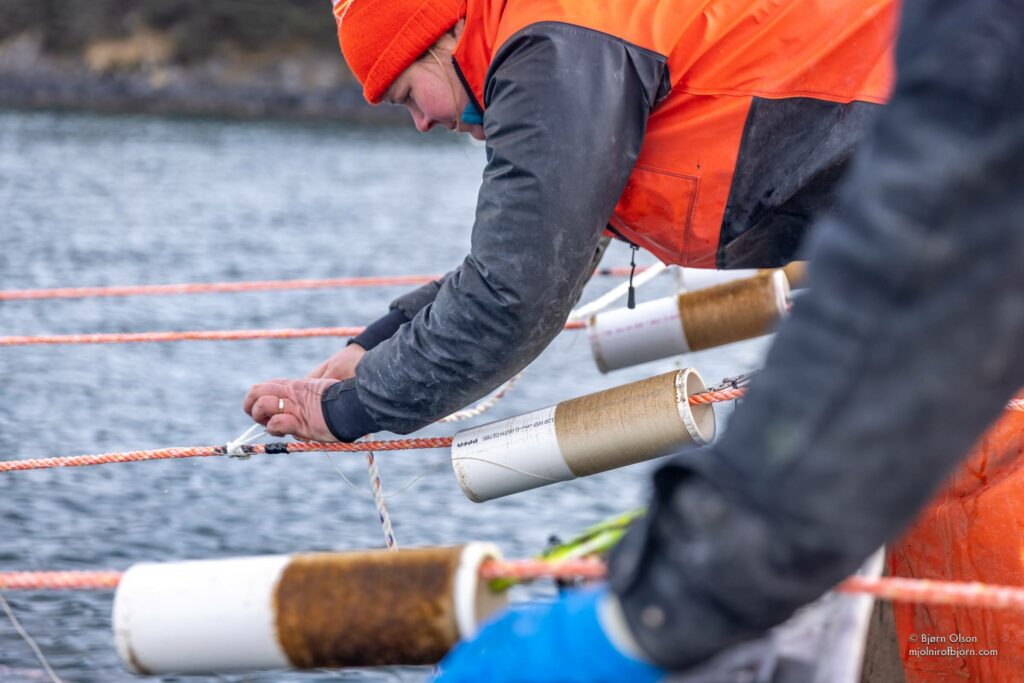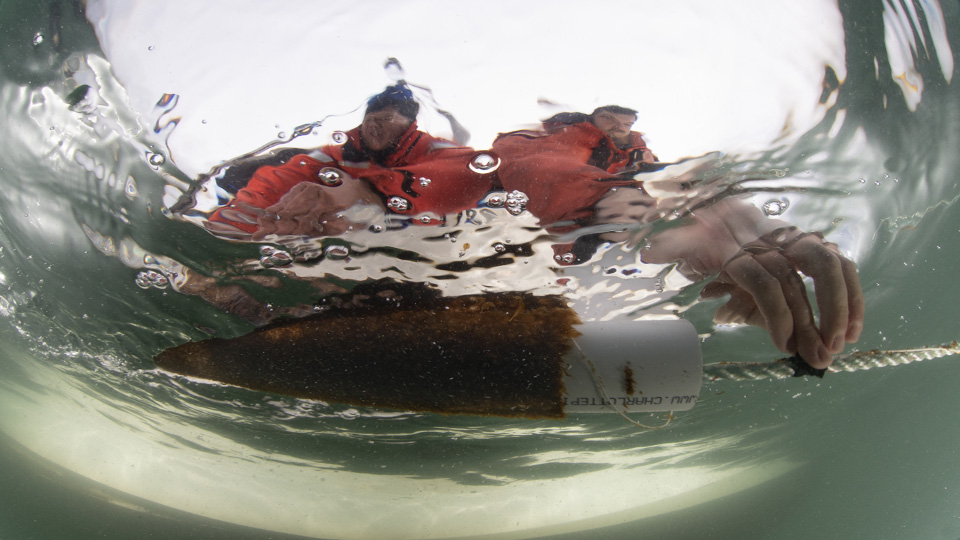Back to: Outplanting
Kelp seed is particularly sensitive to cold weather. Some farmers and scientists believe that exposing kelp seed to air temperature below freezing will kill the seed and cause suboptimal growth or possibly no growth at all. Others have found that it’s possible to outplant in cold weather, as long as the time the seed is exposed to the freezing air is kept to a minimum. The general rule of thumb is to try not to outplant at temperatures below freezing (32°F, 0°C). Windchill is also a factor, causing the delicate cells to freeze even at temperatures above freezing. Ideally, you want to outplant in air temperatures above 40°F and water temperatures between 45 and 50°F.

If for some reason you must outplant in colder weather, try your best to minimize the time the kelp seed is exposed to the air. If the spools are wrapped in paper towels for transport, consider unwrapping them in a warmer environment and placing them in a bucket of raw seawater for final transport to the farm site. This will reduce the risk of the paper towels freezing to the blades when the seed is exposed to the cold air. As you’re working the line, try and keep the seed underwater as much as possible by holding the spool below the surface during any time you’re not actually unspooling.
Beyond temperature, you’ll also want to consider wind and rain. Try your best to pick calm weather with winds of less than 10 knots. This will make working the lines much easier and allow you to focus on quickly getting seed in the water. To the extent that it’s possible, you should also try to avoid outplanting in the rain. Heavy rain can sometimes change the surface salinity of the water at your farm site, which is hard on new seed. Mist or light rain is usually ok.

Tracking temperature for optimal growth
Over time, GreenWave has noticed that the kelp outplanted earlier in the fall tends to exhibit fuller growth and richer color than kelp outplanted later in the season. We believe this is because there are more nutrients in the water when the water temperatures are above 50°F. The longer the kelp sits in the water before temperatures start to drop, the more opportunity it has to absorb these nutrients that will power it through the coldest months of the winter. The tradeoff is that there is a greater chance of biofouling at temperatures above 50°F. As a farmer, you want to hit the sweet spot of outplanting when the water temperatures can support quick kelp growth without allowing fouling from other organisms to flourish. We try to outplant when water temperatures are around 51-53°F. Once water temperatures drop to 40°F, we’ve found that both the kelp’s growth rate and overall yield is severely reduced. That said, it’s always worth outplanting your spools. There have been reports of farmers who outplanted in as late as February and experienced decent growth on their lines.